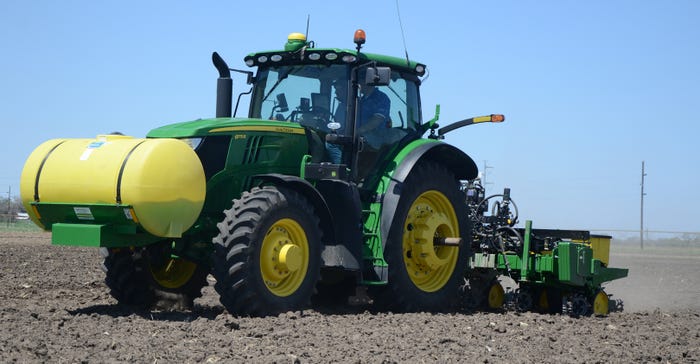
Research has shown a wide range in yield benefits and profit potential using multi-hybrid and multi-variety planting, depending on the year and the location. However, until recently, most of the research was conducted in the "I" states of Iowa, Illinois and Indiana.
That's why Central Valley Ag kicked off a series of multi-hybrid and multi-variety planting trials at eight sites in Nebraska and Kansas in 2017.
"In the western Corn Belt, we don't always take the eastern Corn Belt research data at its face value, especially when we add the extra steps of irrigation, there's always the question of how much variability we deal with," says Keith Byerly, Advanced Cropping Systems manager at CVA. "To verify and quantify that variability was first and foremost."
So, what's been learned after two years of multi-hybrid and multi-variety trials?
A challenging year
One of the biggest takeaways after the first two years is the potential to realize yield benefits from multi-variety planting soybeans may be greater than those from multi-hybrid planting. Last year, soybeans showed significant response to even small differences in terrain, Byerly says.
"Even with just 2 or 3 feet of elevation difference on a field that appears flat to the naked eye, soybeans responded with a couple bushel yield difference across the field," he says. "We saw that pretty consistently, by putting a variety with a little better disease package on those low spots versus on the field."
And when it comes to designating zones, Byerly says elevation often is the best way to determine which hybrids or varieties to plant where.
"With the wetter summers we've had in the last few years, white mold and some of the disease issues that haven't been problems for us traditionally in soybeans have become something that hurts us on yields,” he says. “Addressing bottoms in a different manner than hilltops has really paid some dividends without making major investments in that planter. A 3- to 4-bushel improvement across the field on soybeans is a pretty big deal to a pocketbook."
"When we look at population and variety placement together throughout elevation changes in the field, it compounds the effect of opening up those rows to more airflow and mitigating issues with diseases like white mold," Byerly adds. "We like to be reactive more than we should. We like to see the disease and then treat it. In this case, we've got to anticipate where history has shown we're going to see white mold and attack the problem four to five months earlier."
Corn sites in 2018 didn't fare as well with last season's weather. Six multi-hybrid trials were lost during a June 29 windstorm, leaving insufficient data for 2018.
However, trials in 2017 showed promising results on 20- to 40-acre fields.
"We were seeing 12- to 18-bushel differences on our field averages, which meant that on some of those side-by-side spots we had 30- to 40-bushel differences when we placed our hybrids there the way we thought they should because of soil or elevation," Byerly says.
Return on investment
When it comes to planters and planter upgrades, growers typically want a two-year return on investment, Byerly notes. That's largely because most growers hold their planter in higher regard when it comes to aftermarket equipment and technology — and the planter itself isn't a small investment.
"There's somewhat of an emotional attachment to a planter,” Byerly says. “If we've just gone through a really bad season of planting, it's sort of the proverbial scapegoat. So, a lot of times we get a little bit more cautious on looking at technology that goes on our planter. We want a quick ROI, even though it's a piece of machinery and it's going to last some time. Nobody wants to send the hardware down the road before it's paid us back."
That's why it's all the more important to demonstrate a return on investment from any kind of planter upgrades, he says.
Byerly notes that growers may see a 100% return on investment from multi-hybrid planting the first year, and that return continues to grow down the road, considering the row unit itself is a one-time investment and is compounded by the row configuration of the planter.
"Precision Planting often talks about their goal of being able to pay for that improvement over a growing season," says Mick Goedeken, ACS innovation agronomist at CVA. “Our goal is everything we put on the planter is paid for in that first growing season.
“In the next year, we're going to spend more time in growers' fields and tuning into what we need to look for to adjust as far as hybrid selection and variety selection in soybeans. What are the selection criteria going to be and how can we improve yields across that entire field by switching hybrids on the fly? The big thing is testing it on our own plots and farmers' fields to demonstrate the ROI."
About the Author(s)
You May Also Like






